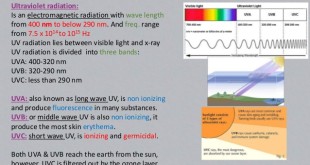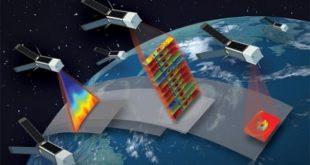Optical networks are vulnerable to several types of security breaches or attacks, typically aimed at disrupting the service or gaining unauthorized access to carried data, i.e., eavesdropping. Depending on the aim of the attack, security breaches can induce financial losses to the clients or cause network-wide service disruption, possibly leading to huge …
Read More »Militaries thrust on Autonomous convoys or Vehicle swarm technology for building Autonomy-Enabled Future Force
Recent combat operations have continually demonstrated the vulnerability of convoys due to their fundamental requirement for delivering sustainment supplies over long distances of unsecured routes. This operational reality of convoy missions makes them particularly vulnerable to attack and ambush. According to US DOD 52 percent of all battlefield casualties are …
Read More »Technical risk management
All organizations face uncertainty. The effect this uncertainty has on an organization’s objectives is referred to as “risk.” The challenge for management is to determine how much uncertainty or risk to accept and how to manage it to an acceptable level. Risk management includes the strategies, processes, systems, and …
Read More »Mine Countermeasures (MCM) capability on AUV and Unmanned Surface Vehicles (USV) for Anti-Submarine Warfare (ASW) , Surface Warfare (SUW) , and counter terrorism missions
Sea mines are one of the cheapest and most dangerous threats for naval forces; a reality experienced in both World Wars and the Korean War. In order to mitigate the impacts and risks of sea mines on naval operations, advanced navies have been increasing their investments in autonomous Mine Countermeasure …
Read More »DARPA Cornucopia to produce palatable food from microorganisms for soldiers
With nutritional status being central to success in battle, food technology has long been considered an enabler for military operations. Food technology has been instrumental in ensuring that troops remain “fit to fight”. Early military leaders realised that how well their men were fed played a crucial role in success …
Read More »Distributed quantum sensor networks
The overarching goal of quantum information science and its enabled emerging quantum technologies is to demonstrate capabilities beyond what is allowed by their classical counterparts. Sensing is an arena that quantum technologies can achieve advantages over classical sensing technologies for practical applications in the near term. Quantum metrology studies the …
Read More »Military applications of Ultravoilet spectrum becoming feasible with Technology breakthroughs
The electromagnetic spectrum is a series of frequencies ranging from radio waves to microwaves, visible light, X-rays, and gamma rays. As the wavelength of the electromagnetic radiation shortens, the waves have a higher frequency—how quickly electromagnetic waves follow each other—and therefore more energy. Ultraviolet (UV) is electromagnetic radiation with …
Read More »Quantum Imaging technique can have military applications, US and China racing to deploy quantum ghost imaging in satellites for stealth plane tracking
Today, we are witnessing the second quantum revolution, where quantum states, which can exhibit superposition and entanglement, are harnessed for quantum technological applications. Quantum Sensing exploits the high sensitivity of quantum systems to external disturbances to develop highly sensitive sensors. Breaking the limitations of today’s established imaging schemes is a …
Read More »Space risks to Astronauts in Deep missions
What exactly happens to the body in space and what are the risks? Are the risks the same for astronauts who spend six months on the space station versus those who may be away on a Mars mission for years? The simple answer is “no.” NASA is researching risks for …
Read More »Nanosatellite and Microsatellite Market growth and trends
Nanosatellite and microsatellite refer to miniaturized satellites in terms of size and weight, in the range of 1-10 Kg and 10-100 kg, respectively. ‘CubeSat’ is one of the most popular types of miniaturized satellites. These are the fastest growing segments in the satellite industry. One of the major advantages of nano …
Read More » International Defense Security & Technology Your trusted Source for News, Research and Analysis
International Defense Security & Technology Your trusted Source for News, Research and Analysis








